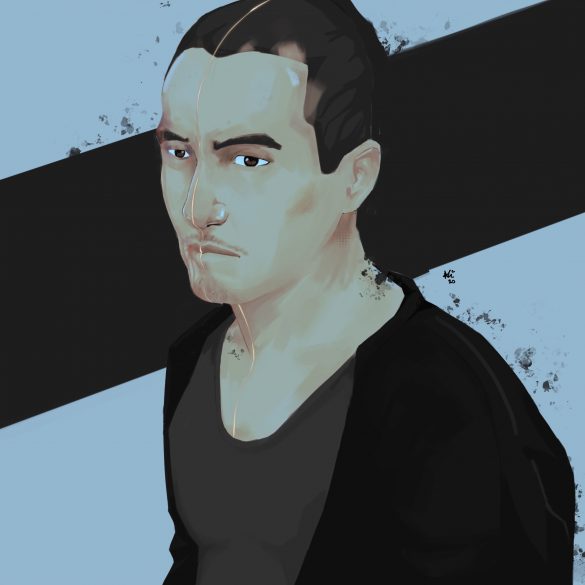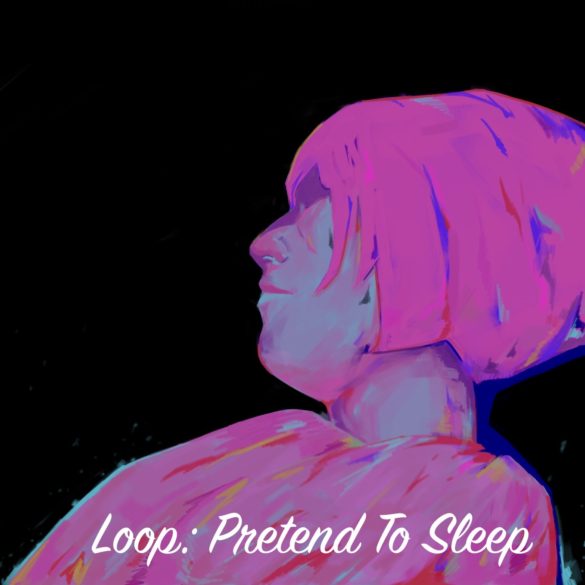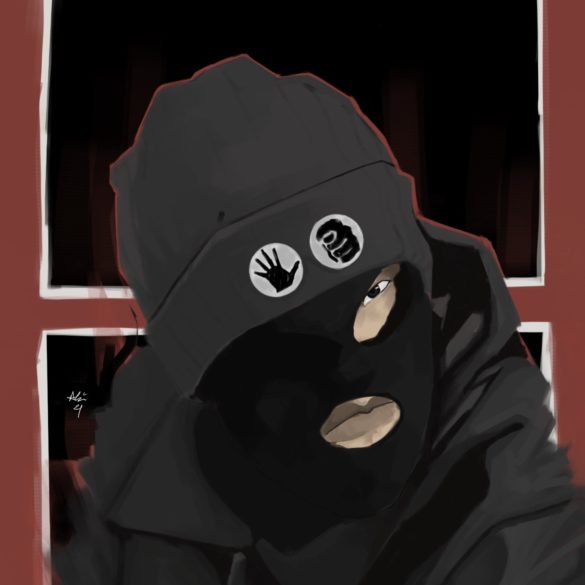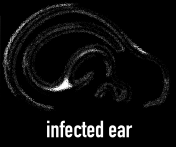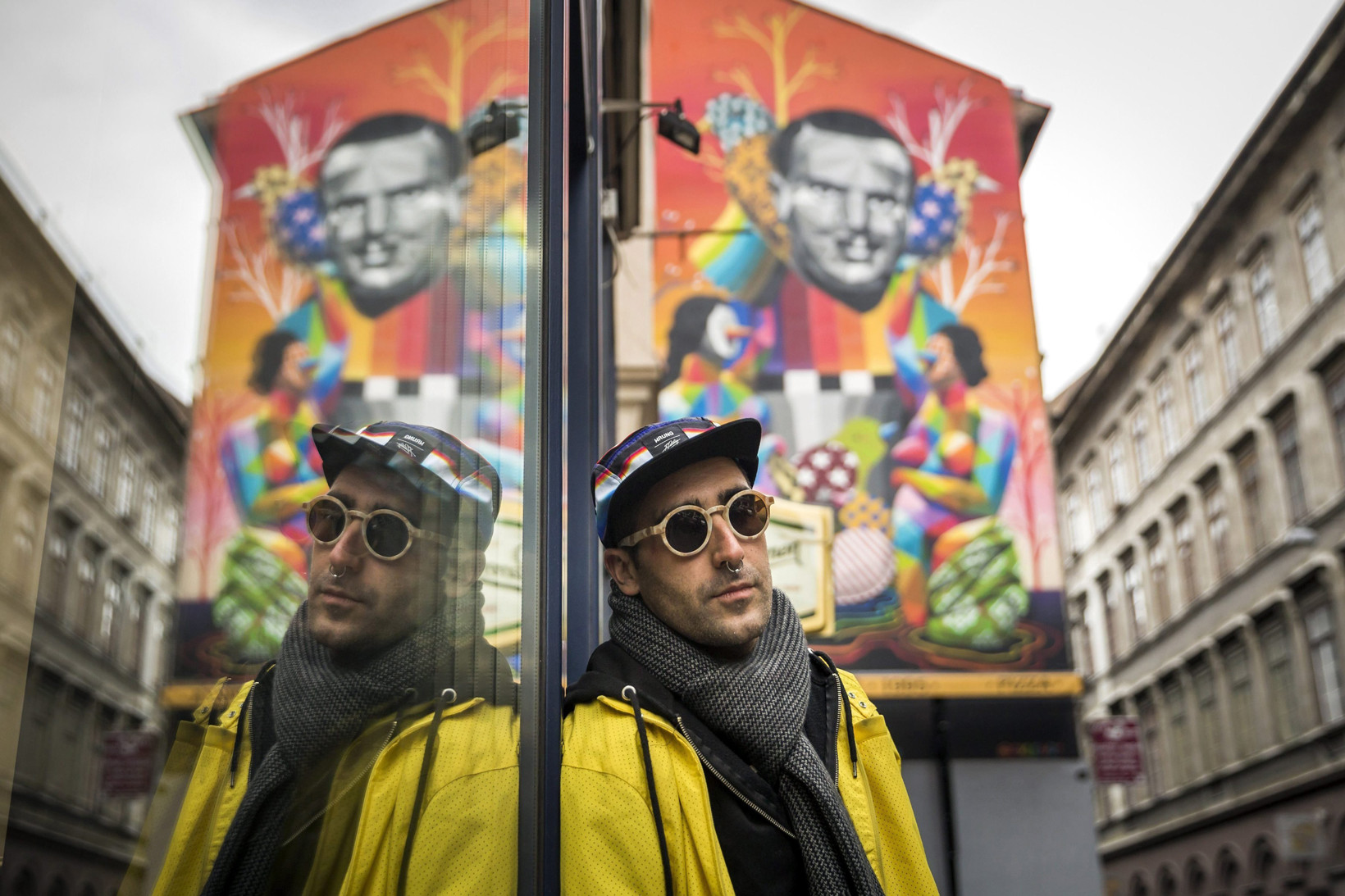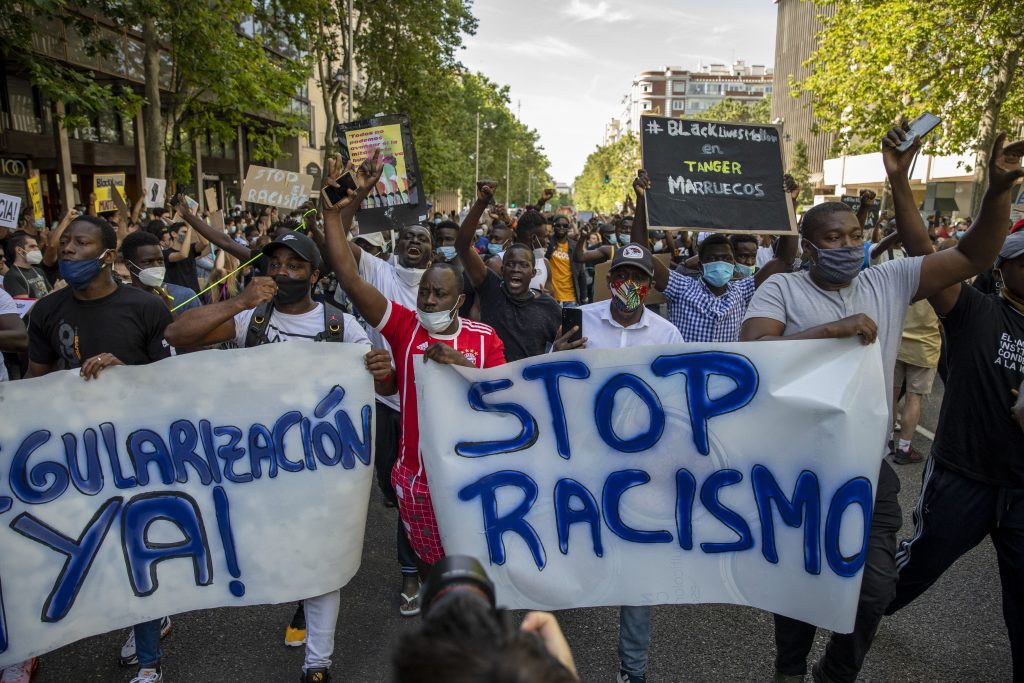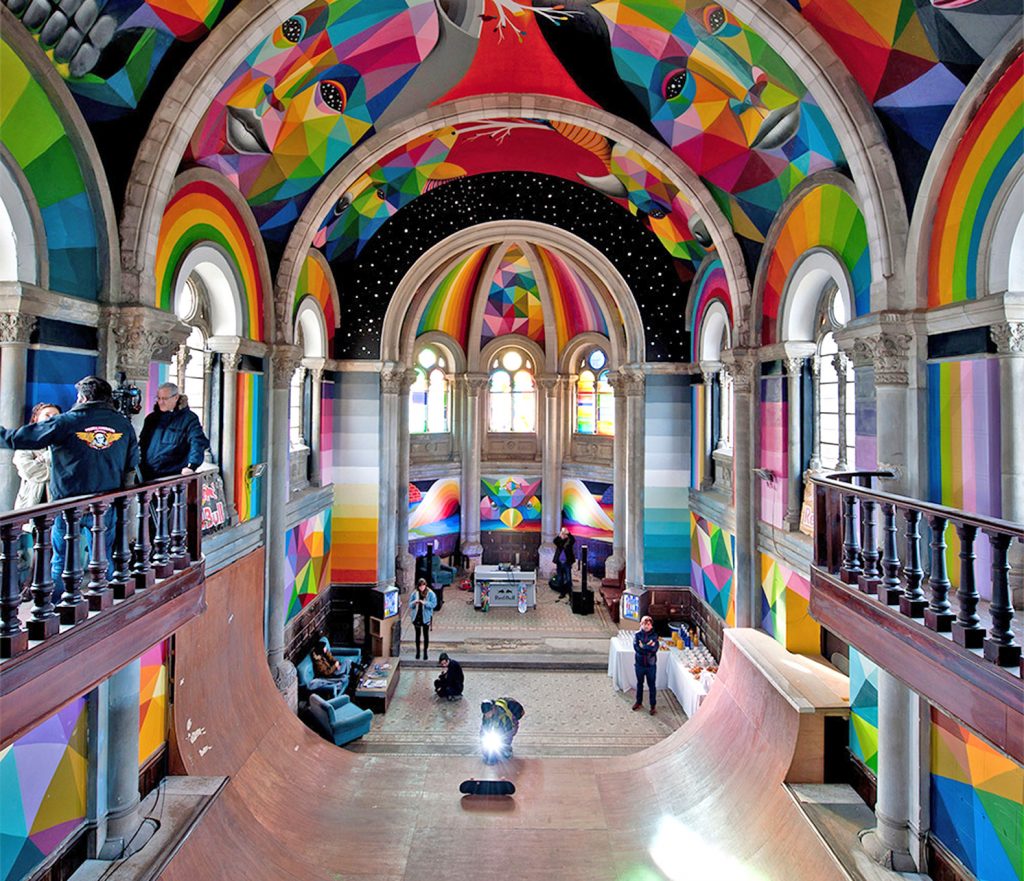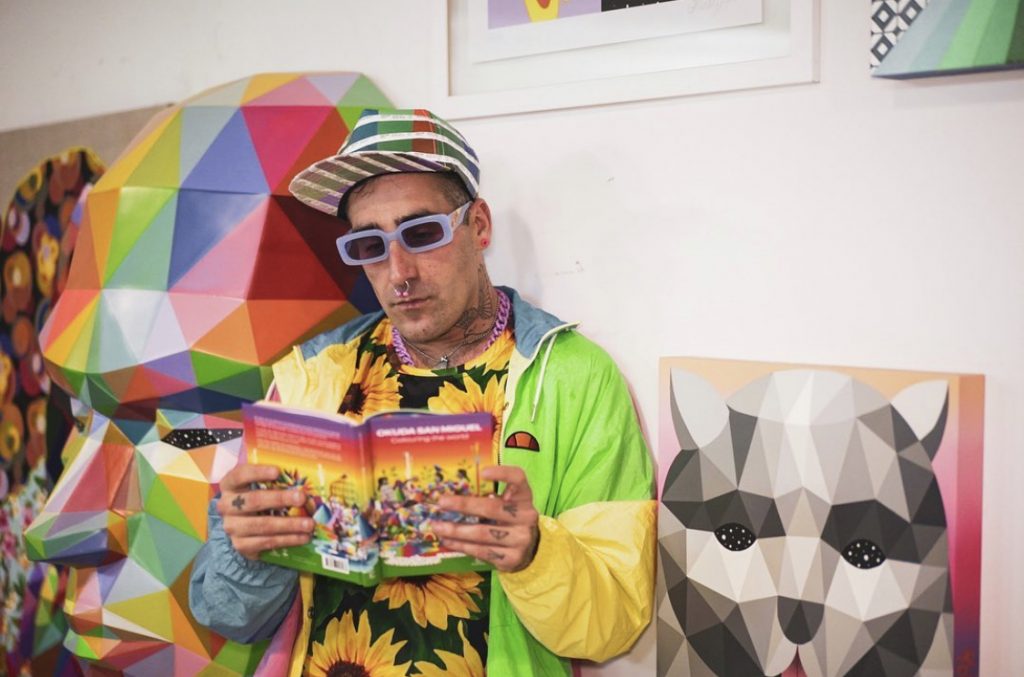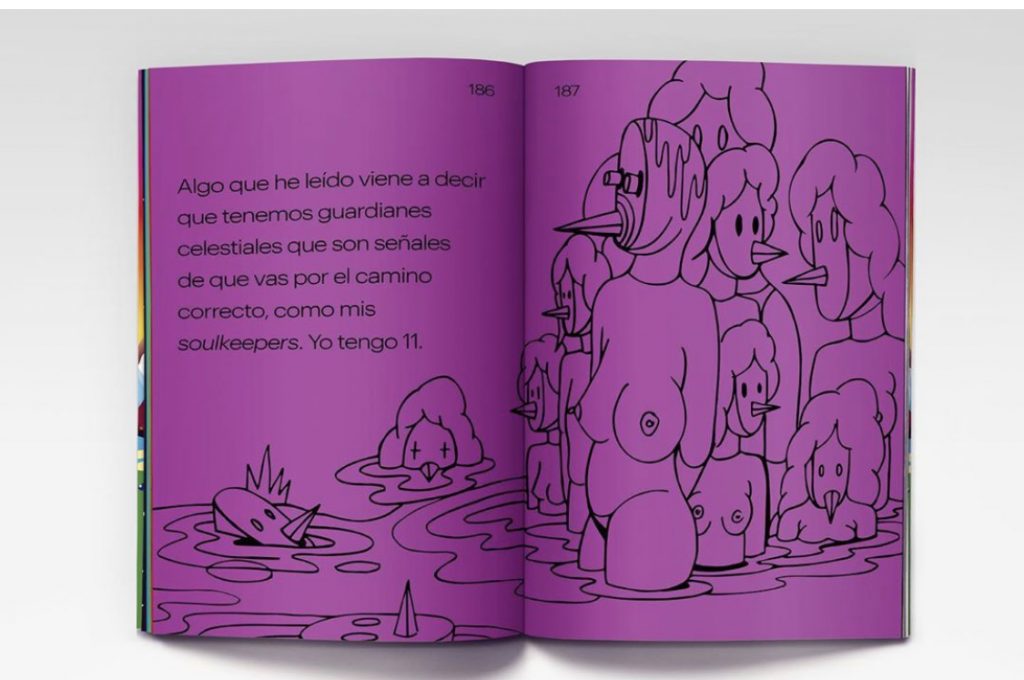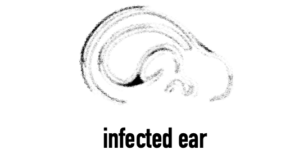Phone interview with Okuda San Miguel
Okuda San Miguel, Óscar San Miguel Erice (Santander, born 19 November 1980) is a Spanish painter and sculptor known for his distinctive style of colorful geometric patterns that portray animals, skulls, religious iconography and human figures. He is perhaps most famous for painting the Kaos Temple in Llanera, Asturias, Spain. His murals can be seen on buildings and objects across the world in India, Mali, France, the United States, Japan, Chile, Brazil, Peru, South Africa, Mexico, Canada, Morocco, Ukraine, and Spain. [Wikipedia]
In your works, you always focus on the war between natural forces and humans, or modernity and roots. With the ongoing pandemic and Black Lives Matter protests, it’s been a year we realize the significance of the streets once again. What does the street mean to you personally?
I think it is the place where I grew up both as an artist and as a person. I still work in the streets. I work in the streets a lot, and I need to keep creating in the street. I need it to feel happy, to feel safe, and to feel alive.
The whole planet has got lockdown for a long time this year. I know you kept yourself busy with COVID-19 related projects like masks for kids to color in and gathering donations, but how did it feel for an artist with a strong street influence and a powerful political stance (in his own way) to see the streets deserted like that?
Yeah, I think the quarantine has brought me some reflections about how much I love the streets and how much I need to go back to work in the streets, you know. Being out of the common art market allows me to do a lot of traveling, making murals, so I hadn’t been trapped in a studio. After having spent my last four years flying around the world keeping my positive spirit to better, I had to spend 2-3 months at home. It was good in a way because I never find time to be at home, but it was too much for me because I need to be out in the streets.
How do you see the contrast between these recent episodes in our lives? First got lockdown at homes, and then feel the urge to get out and speak up for our rights.
Yes, it is crazy. Total opposite situations. One week everybody is home, and then next week everybody is out. It is crazy. I was at a Black Lives Matter march against racism in Madrid last Sunday, but tried to keep the social distance with a mask on and everything.
George Floyd protests here were not as intense as in the USA. With all the state violence, it was much more aggressive in the US, but the demonstrations here have been peaceful since the beginning. We marched down the streets and finished at the city center. It was funny because all the black people started to put music on and dance, it was super nice. I love music.
Does this whole new normal alarm you for the future in terms of getting disconnected from the streets, though? Like studying online, working from home, and stuff like that…
It is kind of alarming, but I try to stay positive and keep my mind positive. Because in the end, the only positive thing that we have had during the quarantine was the nature and all the green recovering a little, you know. The world had to stop and that’s why it happened. So, now the world is greener because the humans are staying at home. This whole process has made me think of the dark sides of capitalism or modernity more than ever.
You have been to the US a couple of times already. Coming from Spain, how would you compare the street life in the US and Europe?
I think what street means for especially the Latin people is that it is a part of their home. Let’s say in Spain, the weather is a little warmer than in the rest of Europe, so it’s more like Latin America. You spend a lot of time in the streets. But if you go to Germany or Belgium or France, it is slightly different, because it rains a bit more, and maybe they go to bed sooner. But we spend all day and all night in the streets. Just like Latin people do. If you look at New York, or Miami, or Los Angeles, you’ll see a large population of Latin people, black people, and they live the street life in a similar way. Part of their homes. That’s why I feel super good in Miami or New York.
“Color is a universal language. It can fill our lives with positive energy. It can serve as an instrument for revolutionary change. It can communicate the message of diversity. It can be the key that sets us free.”
Okuda, the artist who fills inside and outside spaces
with the colors of positive energy and diversity
So, they feel like home to you?
Exactly. Actually, I am planning to move to New York, maybe next year. I have a lot of friends over there, and I feel like it’s my city now since I’ve been there a lot of times. So, I’ve kind of been growing my own family there. I’ve had this moving idea in my head for a long time, so maybe next year, we’ll see. I think it is the big capital thing. Madrid is the same. It is an amazing place to live.
Since we are back in Spain, I have to mention the Kaos Temple where you transformed a classical church into a contemporary art piece. Such a great reuse idea in architecture, but I think it is closed at the moment, isn’t it?
Yes, it is such a sad story. One of the owners died, and the owner’s mom doesn’t really understand about art or about skateboarding and this kind of stuff. So, it is temporarily closed. We are currently in touch with the local administrators and politicians, everybody knows it has become an important tourist attraction now, so I am hoping they will have to reopen it! Unfortunately, politicians don’t care about art either, but tourists are still coming in.
How long did it take for you to finish that project?
Seven days. Seven days of work inside, but around 8 months of total time to completely transform it. Because this project is the only one I just did for myself, the rest of the projects came to me with set budgets and everything, but I did this project because I just wanted it.
And how long do you think the paint can technically stay on?
I think, since it’s indoors, it can pretty much stay forever. Maybe a little touch for cleaning every other year, and it should be fine. Only the lower parts of the walls would be slightly damaged because of the skateboards hitting, but the rest can stay forever. No sunlight, no rain, nothing.
We live in the age of consumer capitalism, I am afraid we won’t be able to leave any cultural inheritance to the next generations. Except for the church! Maybe hundreds of years from now, people will be looking at your psychedelic murals on the walls of the Kaos Temple with amazement. How does that feel?
When it comes to abandoned places like this church, it is like bringing a new life. It is strange because it was once a temple with lots of good and bad things happened inside. But now it’s in a super good condition for different people from different cultures or religions to come to see it. That means everything.
As you said, you travel a lot and color as much grey as you can. How many countries do you think you’ve been to for your projects and exhibitions so far?
I don’t know the exact number, but maybe around 80. Maybe. On my new website, you can see all the places I’ve been to pin on an interactive world map.
Do you have a travel bucket list?
Yeah, I am working on my own funding. I want to use it to travel to some poor African countries like Mozambique, you know like Senegal, Ethiopia, and also many Latin American countries, too. To do social artworks, you know. I hope to go back to doing that this year.
Speaking of coloring the streets of the world, let’s talk about your book. What would you like to say about Colouring the World?
It is my first book and my first work with that much text. There are symbols behind the artwork, and this is the first time I do that. I am very happy because it’s good for people to understand better maybe.
There are 11 chapters based on a different symbol that recurs in my work, in my life experience, and my world view.
Is it in Spanish only?
No, we have it in Spanish and English.
Thank you very much for all your colors for equality, Óscar! Would you like to add anything before we finish?
I just want to tell everyone to follow my Instagram, because I use it as my diary. Everything I do on daily basis is on there. If you want to connect with me, that’s the way!
Get social w/Okuda
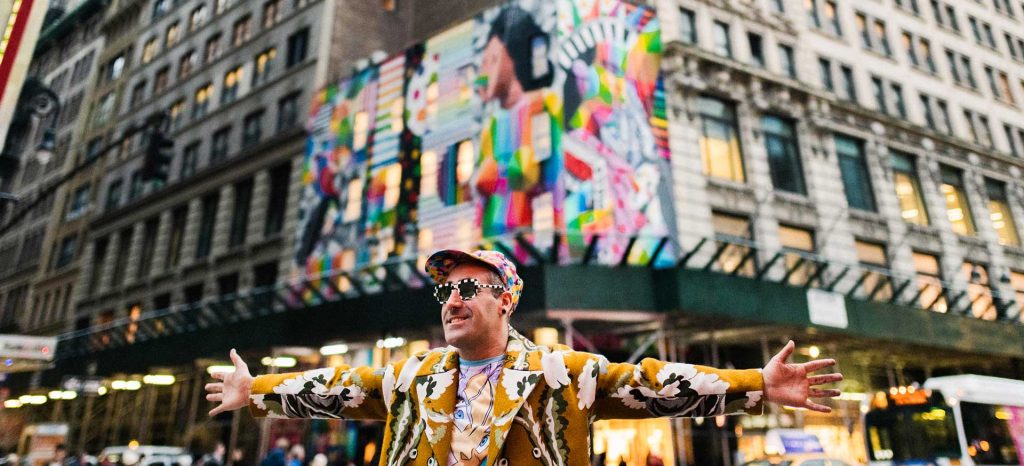
Multiculture Freedom Statue, New York, USA, 2019 
Okuda-Bienal La Habana, La Habana, Cuba, 2019 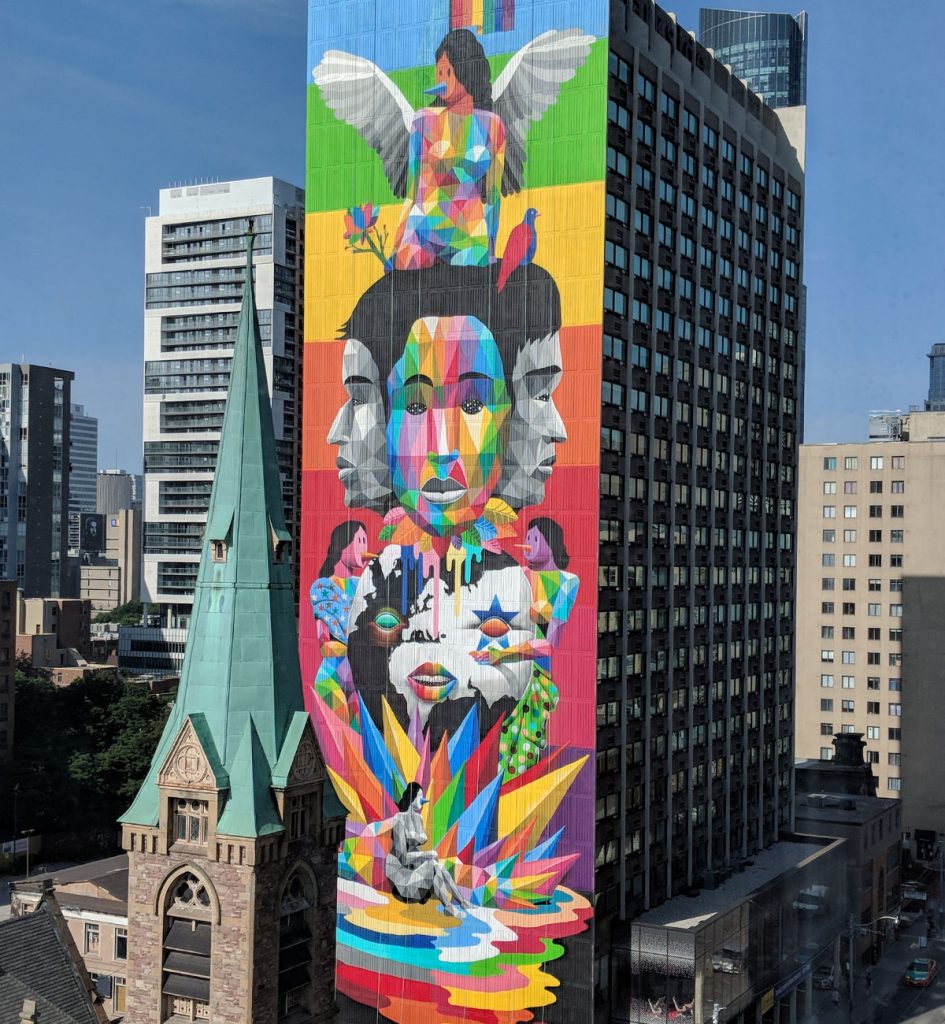
Equilibrium, Toronto, Canada, 2018 
Flags of Freedom, Moscow, Russia, 2019 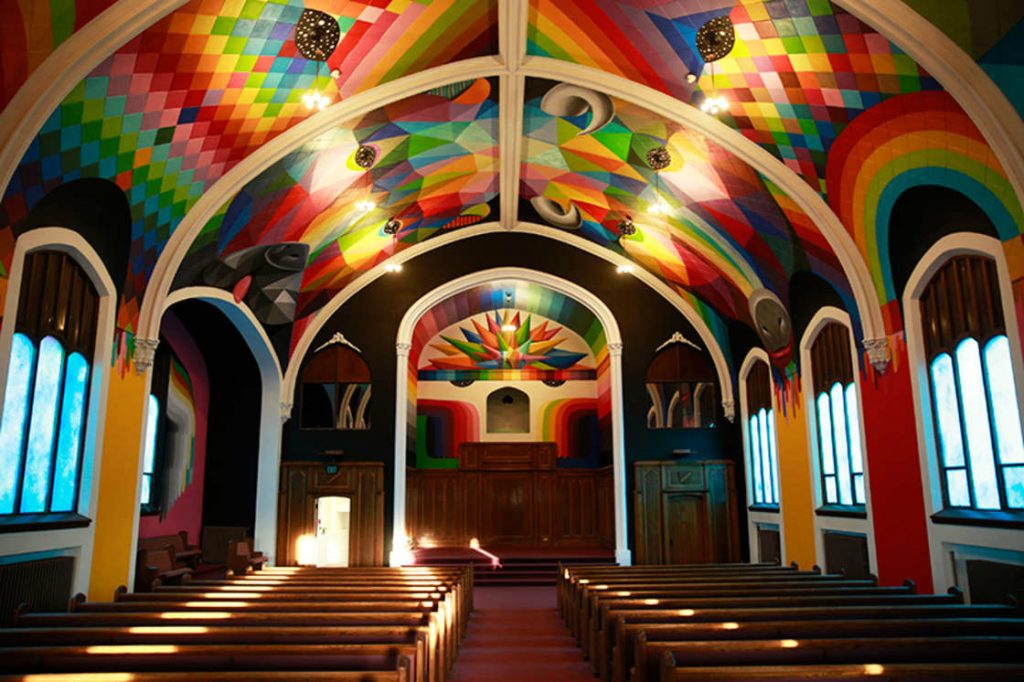
International Church of Cannabis, Denver, USA, 2017 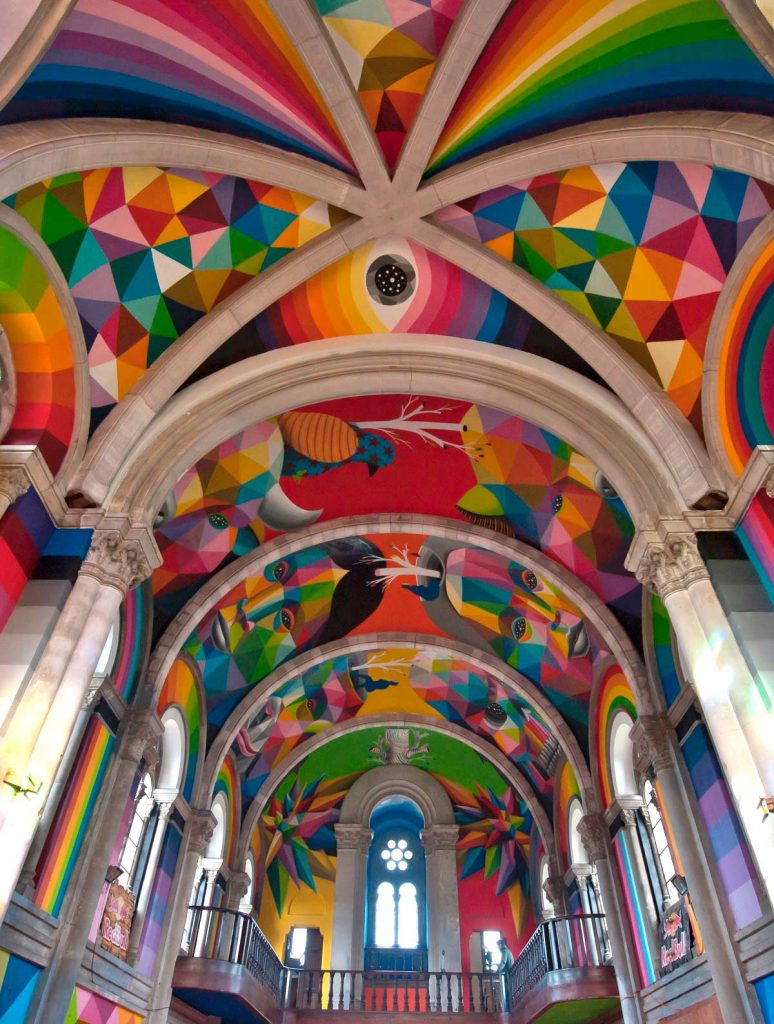
Kaos Temple, Llanera, Spain, 2015 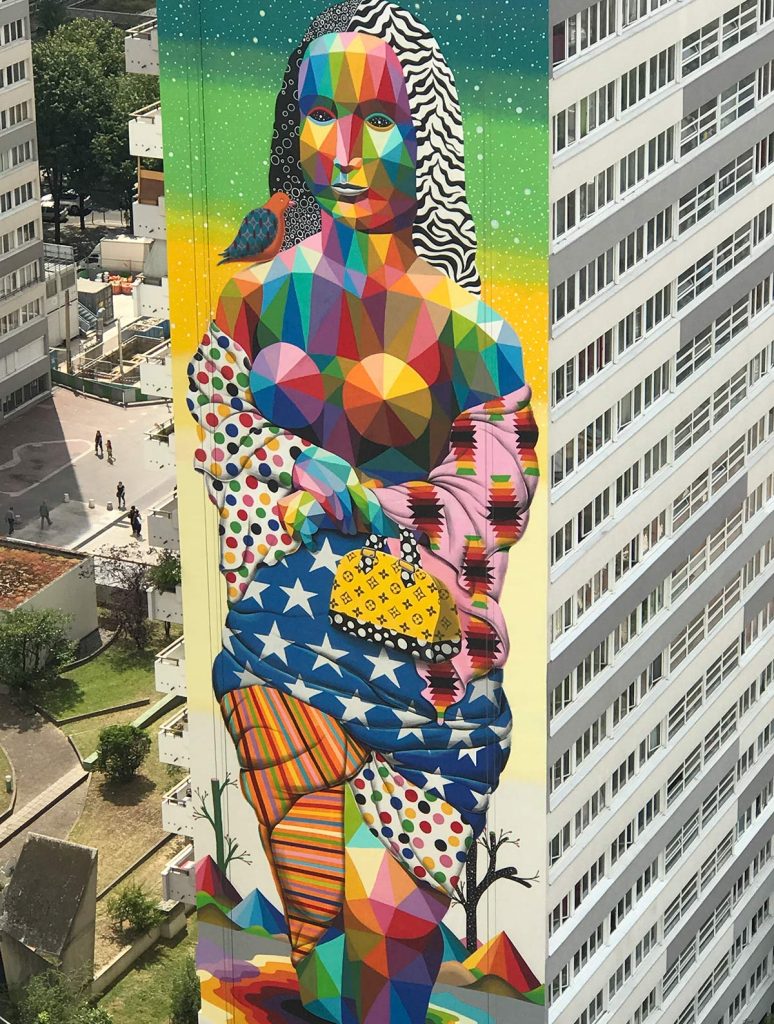
The New Mona Lisa, Paris, France, 2017 
Rainbow Thief, Hong Kong, 2016 
